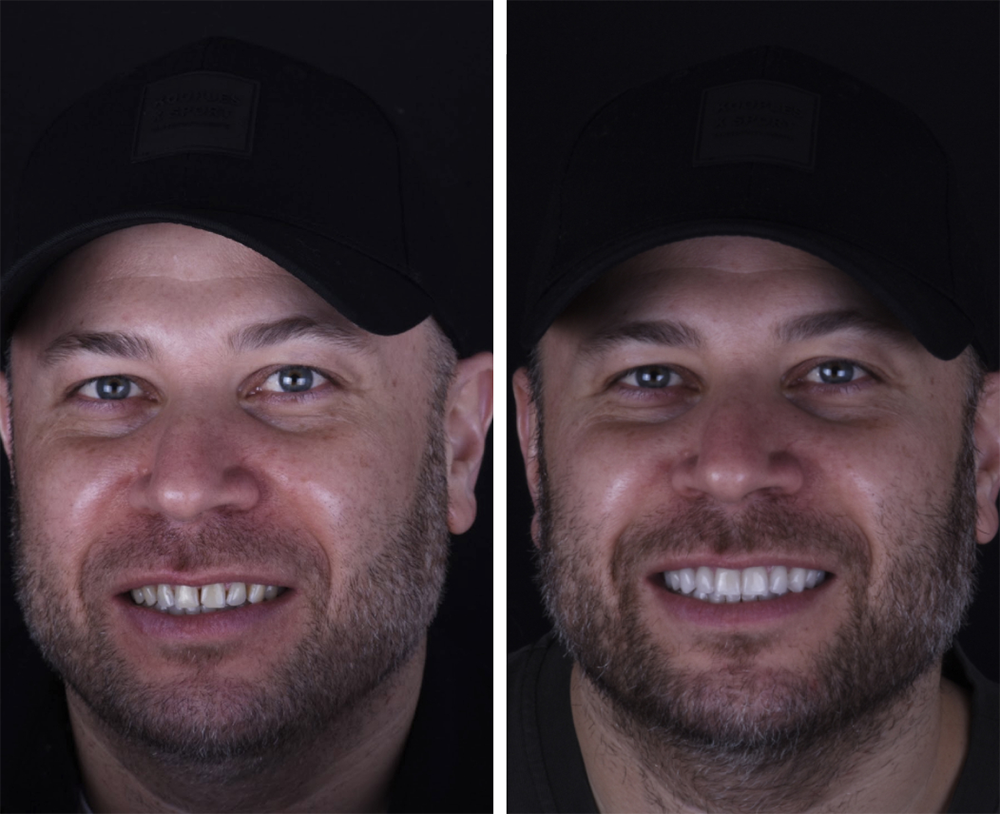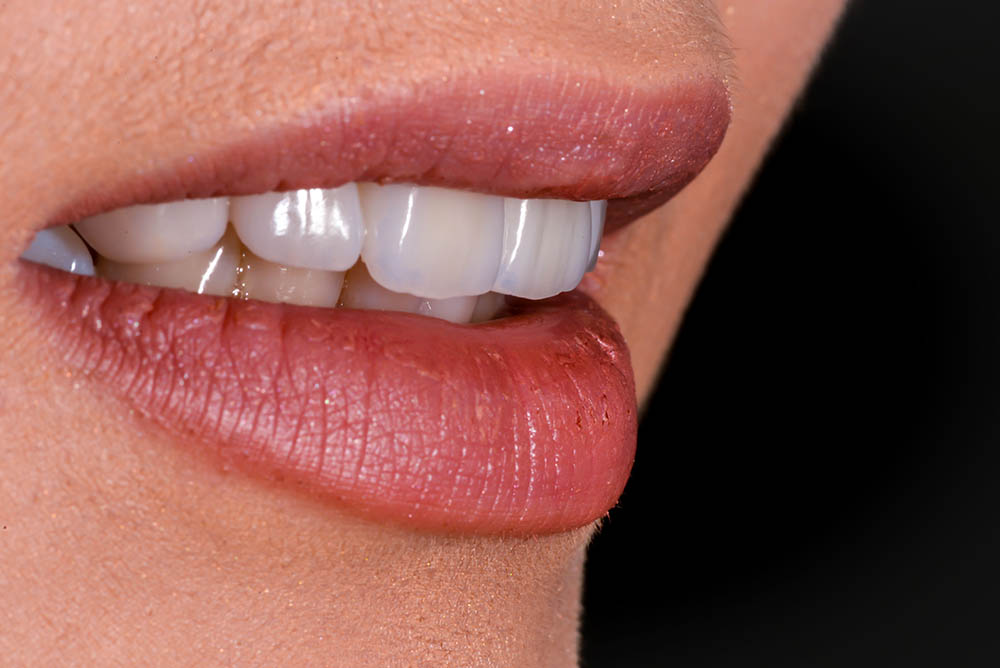Types of porcelain veneers
- CAD / CAM Plates made of pressed ceramic are produced based on a 3D model of the patient’s jaw using modern computer technology and milling. This allows for a high degree of fit and good aesthetic results.
- On the refractor Ultra-thin restorations are made using layer-by-layer porcelain application. This allows for an exact replication of the transparency of natural tooth enamel.
- E-max (lithium disilicate) Made from pressed ceramics. They have a high adhesion rate, good light transmission, and transparency. They are very thin (like veneers) while being strong.
How many veneers can be placed? You can have a restoration on just a single tooth. However, to achieve the most natural effect, plates are fixed across the entire smile zone (6 – 10 teeth).
Types of zirconia restorations:
- Multi-layer A plate that, thanks to layer-by-layer application, allows for mimicking the color and transparency gradient of a natural tooth from the gumline to the cutting edge.
- Solid Zirconia Made using CAD/CAM technology from high-strength monolithic zirconium dioxide blocks. They have low transparency, making the veneers look unnatural.
Article Summary and Comparative Table
| Features | Porcelain Veneers | Zirconia Veneers |
|---|---|---|
| Service Life | 10-12 years | 15-20 years |
| Aesthetics | Impeccably mimic natural color, transparency, and shine of teeth | Multi-layer effectively replicates light conductivity/transparency of tooth enamel |
| Durability | Susceptible to chipping; porcelain plates may break under excessive pressure | Material is durable and resistant to mechanical damage |
Feel free to schedule a consultation, and our specialists will answer all your questions. We also recommend checking out the Smile Gallery showcasing our portfolio of work at Sutton Advanced Cosmetic Dentistry.




